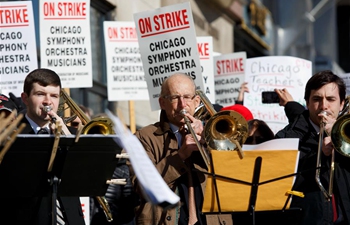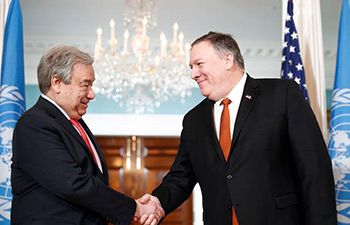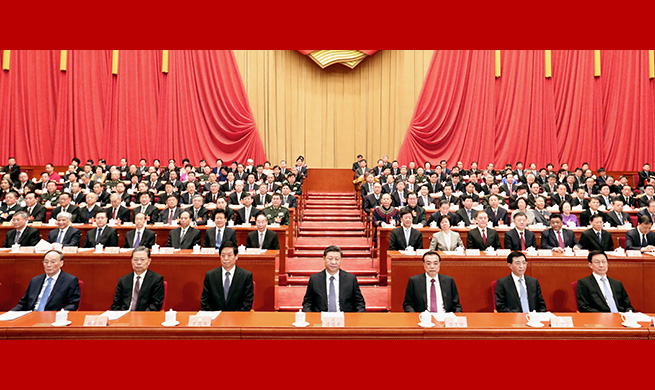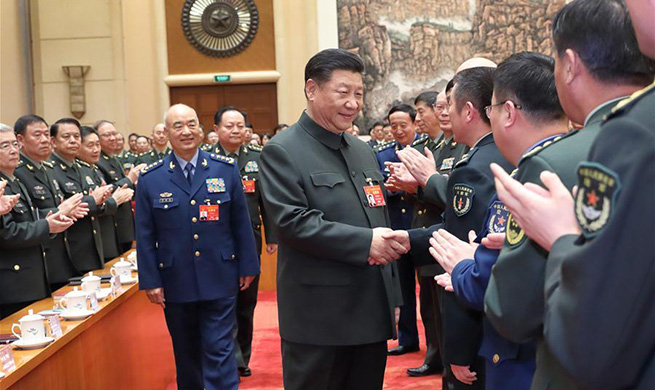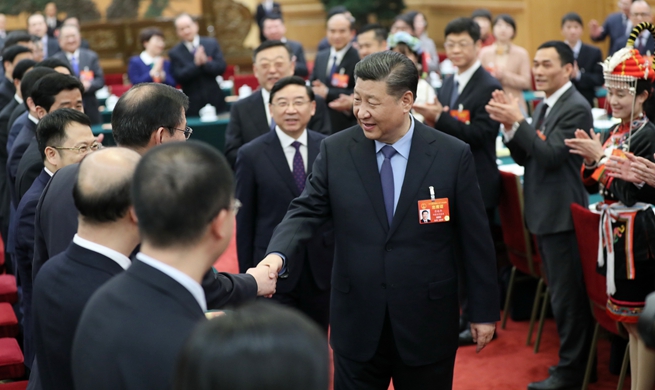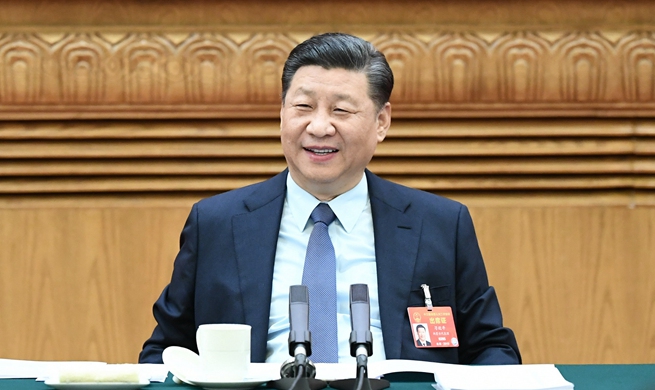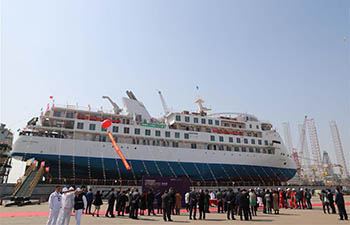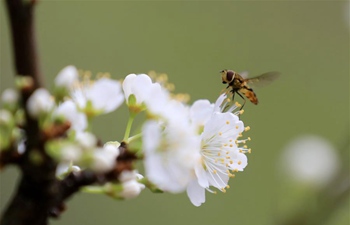WASHINGTON, March 14 (Xinhua) -- "There's real hunger to engage and partner" between China and the United States at local levels, Sister City International (SCI) President Roger-Mark De Souza said, as sister city ties between the two countries hit its 40-year mark.
Sister city ties between China and the United States began shortly after the two countries established diplomatic relationship in 1979. The Chinese province of Hubei and the U.S. state of Ohio became the first pair of sister province/state, while the Chinese city of Nanjing and the U.S. city of St. Louis became the first pair of sister cities.
Forty years on, bilateral sister city relationship has grown and flourished, now the two countries enjoy 277 pairs of sister relationship at different levels, and the momentum is still going strong, De Souza told Xinhua in an interview Wednesday evening.
"There are a lot of opportunities because China is so large, it's such a large population, A lot is happening," De Souza said, noting there's equal enthusiasm on both sides.
"I have many delegations of Chinese who are coming through the sister city network and they're very enthusiastic and very supportive," De Souza said, adding one member of the SCI is set to create a new Chinatown in Miami after becoming inspired on a recent trip to Wuhan, China.
The sister city program was created by former U.S. President Dwight Eisenhower in 1956, centered on the idea of promoting citizen diplomacy between countries as a supplement to government diplomacy. And the SCI was formed to serve as a platform to boost the program.
In the decades that ensued, the idea translated into a "fruitful and sustained" relationship at the grassroot level between China and the United States, according to De Souza.
"They have given birth to a number of innovations, exchange programs and unique opportunities," De Souza said as the relationship expanded far beyond sister province/state and cities to sister counties, ports and schools.
De Souza said the sister relationship is often forged between entities sharing similar geographical features or trade opportunities, and is fueled by common local interests.
"The sister relationship between the U.S. city of Houston and the Chinese city of Shenzhen focused on sports, they were interested in sports exchanges and sports diplomacy," De Souza said, adding that in another example where two ports became sister cities, the emphasis was how to make them more green, more sustainable and more profitable.
The sister city ties, which focused on people-to people exchanges, fostered strong connection between the Chinese and American people, De Souza said, some Chinese high school students who came to the United States for an exchange program may later apply to a university in the same city, while a visit by a Chinese student may spark an interest to learn Chinese in a host family.
"Sister city relationships touch the heart and the passion of U.S. and Chinese citizens, because of that these relationships have endured over time," De Souza said.
The sturdy relationship established at the people-to-people level also help stabilize the U.S.-China relationship, De Souza said.
"People get together, they get to know each other, they begin to understand each other and they began to trust each other and they have fun," De Souza said, adding that this trust between the two peoples can help both countries weather turbulent times in their relationship.
Looking forward, De Souza sees great potential for sister city relationships as it takes on new meaning.
"We do trade and investment, community development, youth and leadership and arts and culture, those areas will continue. Things like disaster mitigation, sustainability, resilience, economic development, cyber security are all areas that we want to continue to build on," De Souza said.
As sister city relationship between China and the United States continues to prosper, De Souza said he hopes it would become a legacy for the generations to come.
"I hope my great, great grandchildren would be able to see that the U.S.-China sister city relationships have sustained over time and continued to allow us to better understand each other, to collaborate and engage and to build trust," he said.





